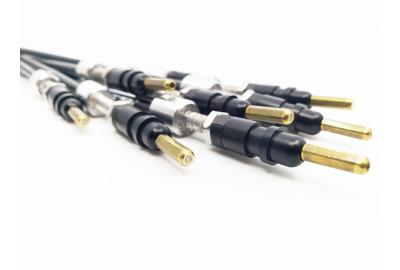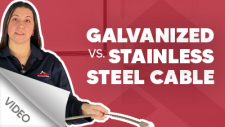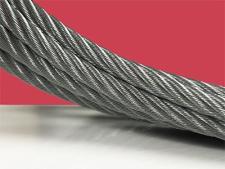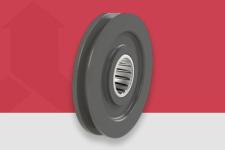A push-pull assembly is used to translate movement - typically gradiently. Such mechanical cable assemblies are often used in places where actuating gradual movement like going forward or backward, up or down, fast or slow, are the device’s goals. Picture a vehicle, an aircraft or even simpler, your lawnmower accelerator. These are all push-pull applications where the desired outcome is a device that allows the user to gradually increase or decrease power. That is a push-pull mechanical cable assembly application and Carl Stahl Sava Industries has been manufacturing them for almost 50 years.
Wrapped around these sophisticated push-pull mechanical cable components is a casing or jacket. This casing ensures the smooth and reliable performance of the push-pull product over many cycles. Think of your bicycle’s hand breaks for instance. That is a push-pull cable assembly essentially that is protected by the casing within which it is enclosed.
There are three main ways cable casing helps push-pull assemblies.
# 1: Improved Translation of Motion
In push-pull cable assemblies, the pushing motion on one end of the assembly results in pulling on the other. The two types of motion can be translated a few inches or a few feet, depending on your unique assembly requirements. Without cable casing, the cable in motion will have no way to travel smoothly and reliably. The cable casing provides an effective and efficient conduit for the mechanical cable to translate the push or pull motion. Otherwise, neither motion would be able to travel along the assembly’s path..
# 2: Customized Casing
Some of the most popular casing coatings are vinyl, nylon and Teflon. Each is suited to different applications, so it’s important that your engineering team knows precisely what you need your casing to achieve. Nylon, for example, is more often used in assemblies that use pulleys, where the actual cable isn’t meant to make contact with the pulley. Nylon can also extend the lifespan of the cable, so it’s ideal for robotics and other applications that require longevity. Moreover, lubricant can be trapped inside the nylon coating and act as a protective barrier between the cable and the pulley, ensuring smooth, fluid motion across many cycles. Teflon coating, on the other hand, is used more commonly in medical applications because it is a non-stick, slippery and contaminant-resistant material. These features allow the cable to traverse a variety of environments without issues. Teflon is also resistant to heat and cold, adding to its environmental advantages. Vinyl (or PVC) casing is similarly adaptable, but relatively inexpensive too. Vinyl coating used in mechanical cable casing is also fairly durable, and is flame- and oil-resistant. This coating can also be manufactured in a flat, matte or shiny, gloss finish, meaning aesthetic requirements can often be achieved as well. Vinyl casing likewise possesses a high tensile strength and is also known for its flexibility, making it a versatile option, easily applied to a wide host of mechanical cable scenarios.
# 3: Increased Buckle Protection
A push-pull motion, without casing, can cause the cable to buckle. This strain would eventually break the cable. Cable casing guides the push and pull motions to move correctly along the assembly’s travel path. Motion will always follow the path of least resistance, so it’s important to have cable casing to enable the mechanical cable to deliver the push or pull motion to its final destination effortlessly over many years.
Oftentimes, push-pull mechanical cable assemblies do not move across a straight line. In fact, the assembly’s path may include bends or curves by virtue of the application’s design. The cable casing can, therefore, be linear or contoured to meet the complex needs of your application. Push-pull mechanical assemblies cannot have too many curves within them however. So, most cable casings are linear.
Nevertheless, when the mechanical cable assembly needs to curve around an object, a contoured cable casing is easy to add to the assembly so the push or pull motion is achieved smoothly and buckling is not likely. Carl Stahl Sava Industries offers a range of push-pull components in a variety of shapes and sizes, along with the engineering expertise to ensure that your push-pull cable components are designed to succeed in the field every time.
Push-Pull Assembly Expertise at Sava
Ensure your next push-pull, mechanical cable assembly is designed and manufactured correctly. Contact a Sava sales representative and let our engineers help guide you from there.






